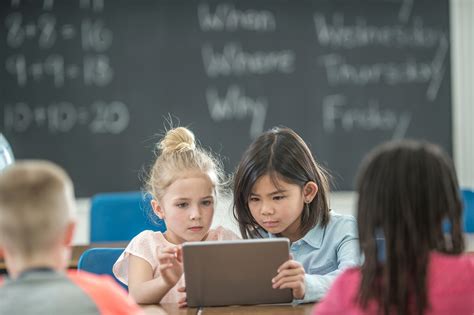The Crisis in Education
The state of education today is a dire one. Students are falling behind, teachers are feeling overwhelmed, and schools are struggling to keep up with the demands of the 21st century.

According to a 2019 report by the National Education Association, 50% of teachers feel that they do not have the resources they need to be effective. The National Center for Education Statistics reports that only 37% of eighth-graders are proficient in reading, and only 35% are proficient in math.
These statistics are alarming, and they point to a need for radical change. The current system is not working, and it is time for a new approach.
The Opportunity
The digital age has brought about a wealth of new opportunities for education. Technology can be used to personalize learning, make it more engaging, and provide students with access to a world of information.
However, technology is not a panacea. It cannot solve all of the problems that face education today. But it can be a powerful tool for change, if it is used wisely.
The Power of Technology
Technology can be used to empower educators and students in a number of ways.
- Personalized learning: Technology can be used to create personalized learning experiences for each student. This means that students can learn at their own pace, in their own way, and on their own schedule.
- Engaging learning: Technology can be used to make learning more engaging for students. This can be done through the use of games, simulations, and other interactive activities.
- Access to information: Technology can provide students with access to a world of information. This means that students can learn about anything they want, anytime they want.
The Role of the Teacher
In the digital age, the role of the teacher is changing. Teachers are no longer the sole source of information for students. Instead, they are becoming facilitators of learning.
Teachers can use technology to create personalized learning experiences for each student, to make learning more engaging, and to provide students with access to a world of information. They can also use technology to assess student learning and to provide feedback.
The Way Forward
The digital age presents a wealth of opportunities for education. However, it is important to use technology wisely. Technology is not a panacea, but it can be a powerful tool for change.
In order to take back the classroom, we need to empower educators and students with technology. We need to create personalized learning experiences for each student, to make learning more engaging, and to provide students with access to a world of information.
We also need to change the role of the teacher. Teachers are no longer the sole source of information for students. Instead, they are becoming facilitators of learning.
By taking these steps, we can create a more equitable and effective education system for all.
Common Mistakes to Avoid
When using technology in the classroom, it is important to avoid the following common mistakes:
- Overreliance on technology: Technology should be used to supplement teaching, not replace it.
- Lack of planning: It is important to plan carefully before using technology in the classroom.
- Not training teachers: Teachers need to be trained on how to use technology effectively in the classroom.
- Not engaging students: Technology should be used to engage students, not to bore them.
- Not assessing student learning: It is important to assess student learning regularly to ensure that they are making progress.
FAQs
1. How can I use technology to personalize learning?
There are a number of ways to use technology to personalize learning. One way is to use adaptive learning software. This type of software adjusts the difficulty of the material based on the student’s progress. Another way to personalize learning is to use online learning platforms. These platforms allow students to learn at their own pace, in their own way, and on their own schedule.
2. How can I make learning more engaging?
There are a number of ways to make learning more engaging. One way is to use games and simulations. These activities can help students to learn in a fun and interactive way. Another way to make learning more engaging is to use videos and other multimedia resources. These resources can help students to visualize the concepts they are learning.
3. How can I provide students with access to a world of information?
There are a number of ways to provide students with access to a world of information. One way is to use online resources. These resources can include websites, databases, and videos. Another way to provide students with access to information is to use the school library. The school library can provide students with books, magazines, and other resources.
4. What is the role of the teacher in the digital age?
In the digital age, the role of the teacher is changing. Teachers are no longer the sole source of information for students. Instead, they are becoming facilitators of learning. Teachers can use technology to create personalized learning experiences for each student, to make learning more engaging, and to provide students with access to a world of information.
5. How can I avoid the common mistakes when using technology in the classroom?
There are a number of common mistakes to avoid when using technology in the classroom. These mistakes include:
- Overreliance on technology
- Lack of planning
- Not training teachers
- Not engaging students
- Not assessing student learning
